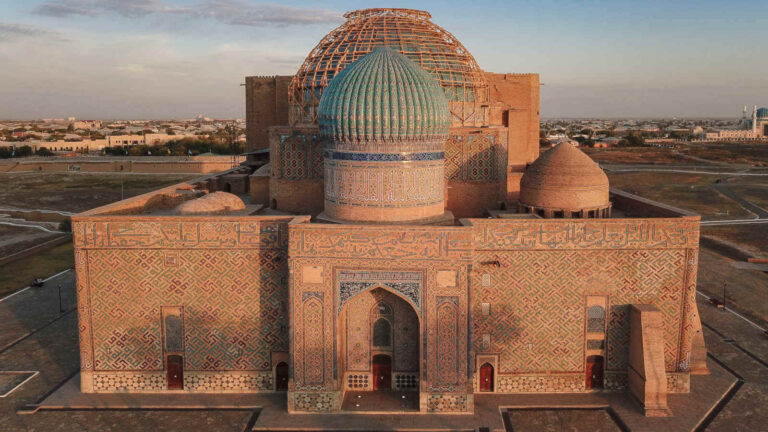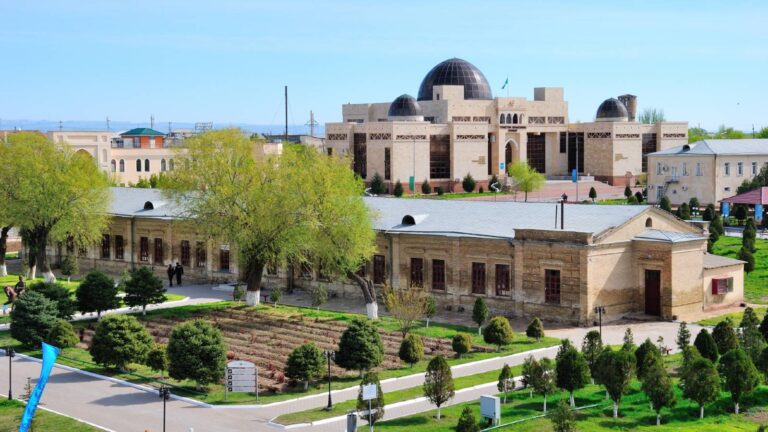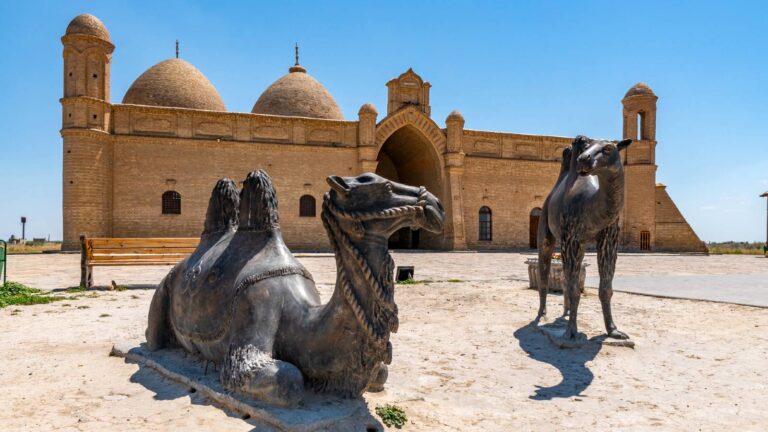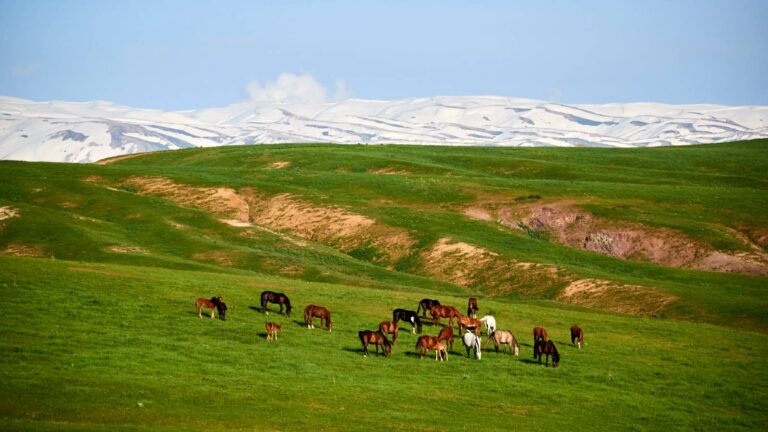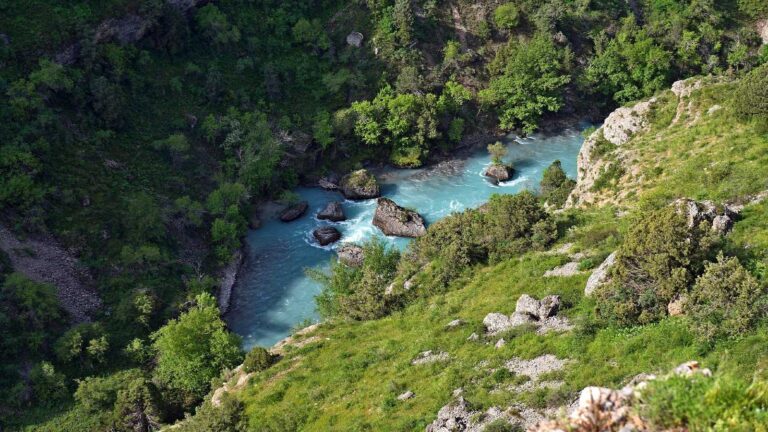Getting There
Shymkent, the closest major transport hub to Turkestan, is 180 km away. From Almaty or Astana, one can get to Shymkent by plane, then change to a bus or taxi, which will take you to Turkestan for about three hours. Also, the large cities of Kazakhstan and Turkestan are connected by railway – with Astana directly, and when departing from Alma-Ata, a transfer will be required in Shymkent.
In the city itself, you can get around by city buses and minibuses, which briskly scurry along the streets of Turkestan, stopping with a wave of the hand. To get off, you need to warn the driver about the stop in advance. Convenience, speed of service and state-of-the-art equipment are just a few of the advantages of Turkestan International Airport. Today Turkestan receives more than 2 flights a week operated by the best airlines. Finding an airline in accordance with the chosen route and within the allocated budget will not be difficult.
What to Expect
Turkestan is a city of miracles that you can believe in only by seeing them with your own eyes. This is a city where masterpieces of modern architecture coexist with historic quarters. The city now has a large shopping center Caravan Saray, which has become the largest project in the region, where tourists will be able to get acquainted with the history of Turkestan, the culture of Kazakhstan, historical figures and national sports.
Caravan-Saray provides two premium class hotels, designed for 115 rooms, shopping and family entertainment centers with a footfall of 300 thousand people a year, as well as a panoramic attraction, spa centers, a flying cinema where you can make a unique journey and plunge into the history of the Kazakh people with the help of the latest technologies in 8D format.
History
The city of Yassy (the ancient name of Turkestan) was founded around 500 AD at the intersection of caravan routes from Bukhara, Samarkand and Khiva to the north.
The city owes its popularity to the poet and philosopher Khoja Ahmed Yassavi, who settled here in the XII century. Yassavi was a preacher of a special philosophy of Islam, the followers of which came to Yassy from other cities.
At the end of the XIV century, the memory of Yassavi was immortalized – by order of the commander Tamerlane, a mausoleum was built with an adjoining mosque.
In the XVI-XVIII centuries Turkestan became the capital of the Kazakh Khanate, until that time the city was overgrown with the tombs of the rulers.
For many centuries, Turkestan has become a place of pilgrimage among Muslims who are mostly visiting the mausoleums of Arystan-Baba, the well of Ukash-ata, a man who, according to legend, was one of the companions of the Prophet Muhammad, as well as the mysterious cave with the Ak-Mechet oasis (Akmeshit).
The history of this city begins in the 6th century BC, when two cities appeared in the Turkestan oasis – Shavgar and Yasy. Subsequently, in the place of the latter, Turkestan develops, while Shavgar gradually disappears. The city reaches its heyday by the XII century, when the fame of a populous rich settlement located on the Great Silk Road spreads throughout the Islamic world. The Tatar-Mongol invasion dealt a serious blow to the city, but soon the oasis again becomes a major political and economic center. The most famous inhabitant of Turkestan was Khoja Ahmed Yassavi, a religious scholar who won immense popularity and veneration among believers. After his death, the city also became one of the religious centers.
In the Middle Ages and Modern Times, Turkestan became, in fact, the capital of the Kazakh khans. Residences were built, ambassadors from different countries, including Russia, came to the city. Representatives of the Central Asian states have gathered in Turkestan, concerned about the Chinese aggression.
After the conquest of these lands by Russia, the city loses its status as a capital, life in it changes radically. With the annexation to the USSR, industrial enterprises, schools, and hospitals were created. Unfortunately, after 1991, the city is going through hard times, however, gradually, due to industry and tourism, the development of Turkestan is gaining momentum again.
The city has many interesting medieval monuments. A special place is occupied by the Mausoleum of Yassavi, the most prominent Sufi preacher who lived in Turkestan in the XIV century. You can also visit the mausoleums of Kazybek bi, one of the compilers of the first set of laws, and the mausoleum of Aystan-baba, a mystic and religious figure, according to the legend of a student of Yassavi himself. The Karatau and Otrar oasis reserves are located near the city, where you can enjoy the local nature and learn about the history of these places.
Facilities Available
The city houses shopping centers, hotels, sports grounds, restaurants, attractions. All sights of the city have car parking zones, public toilets, guest houses.

